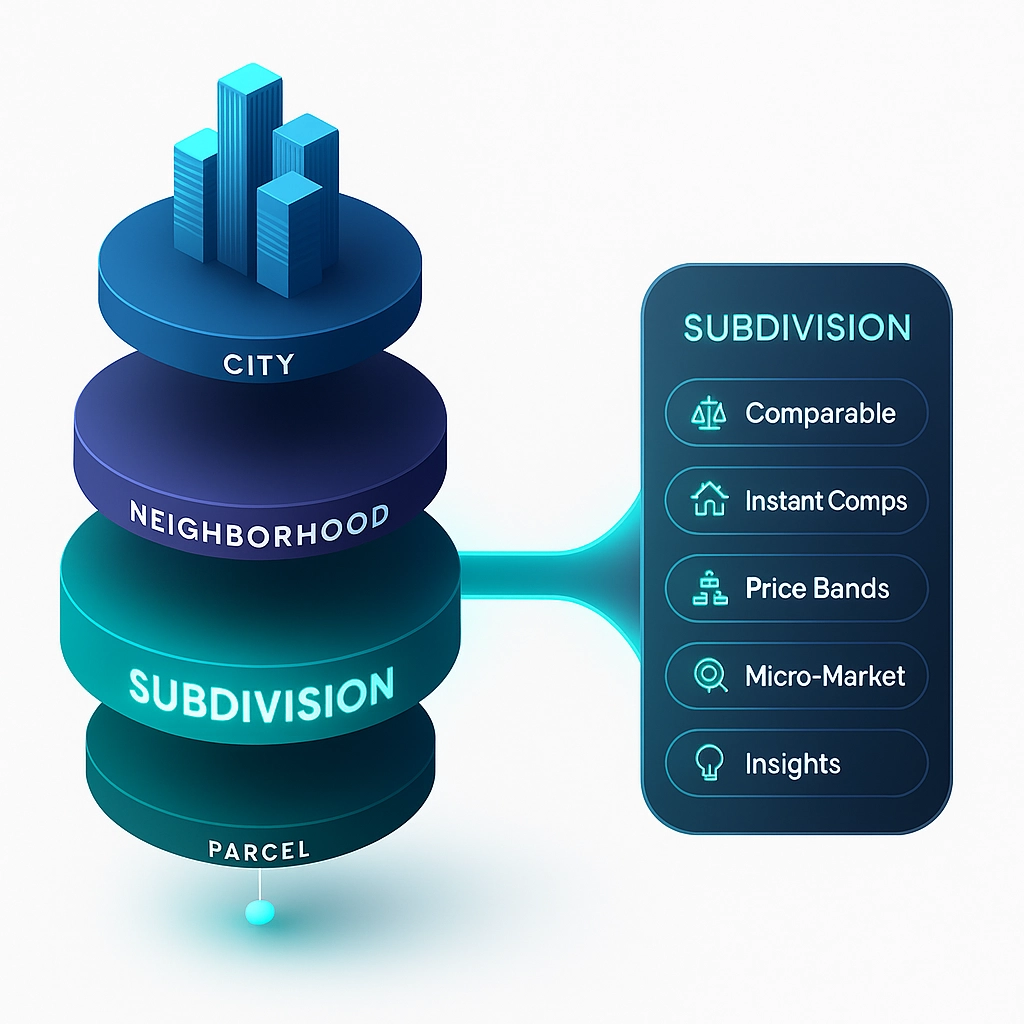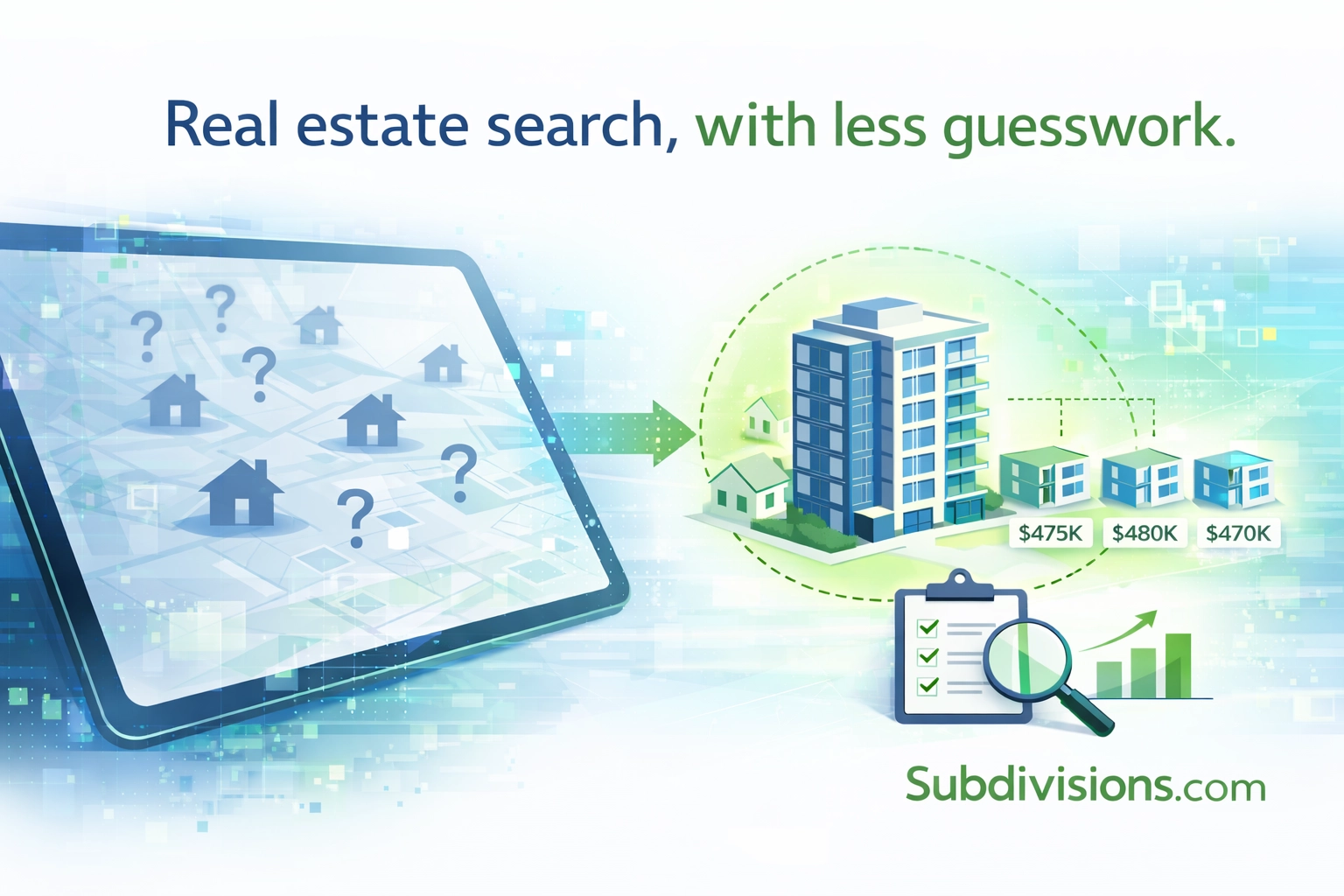Everyone in real estate has always known that context is everything.
A home is never just a listing — it's a relationship between location, timing, amenities, buyer needs, and local market conditions. Since the earliest days of online property search, the challenge hasn't been recognizing the importance of context. The challenge has been building the infrastructure to deliver it — consistently, cleanly, and at scale.
Until now, that infrastructure simply didn’t exist.
The data was messy.
The systems were fragmented.
And the industry lacked the technical depth and incentives to structure it properly.
So, despite decades of search innovation, most consumer and agent tools remained stuck in the same loop:
Pull up listings.
Filter by price.
Sort by square footage.
But ask more meaningful questions —
“Is this a good deal for this building?”
“How does it compare to other sales in this subdivision?”
“Is the price justified given community-level trends?”
— and you’re still met with surface-level output.
The Truth About Real Estate AI
It’s not that AI can't answer these questions.
It’s that it doesn’t know how to ask them—because it lacks access to structured, localized context.
Even the most advanced AI models today are powered by global knowledge and statistical language patterns.
What they aren’t powered by is clean, hyperlocal intelligence—the kind of micro-market data that turns answers from generic to genuinely useful.
And that’s the problem Subdivisions.com is solving.
Building the Missing Infrastructure
At Subdivisions.com, we aren’t trying to reinvent how people search for homes.
We’re rebuilding the foundation beneath it.
Our system curates and structures data at the subdivision and micro-market level—capturing the nuance that traditional portals overlook:
What’s typical for this building?
What’s trending in this community?
What explains a pricing premium on the same floor plan?
We’re not just indexing listings.
We’re preparing real estate data to be understood by AI—not just shown to users.
This is the infrastructure that real estate AI has been missing.
Not because no one believed in context—
But because until now, no one had the dataset, discipline, or architectural approach to make it usable at scale.
The Shift Isn’t in Belief — It’s in Readiness
So no, 2025 isn’t the year context suddenly matters.
It’s the year context finally becomes operational.
The industry is finally catching up to what professionals have always known:
Intelligence without context is noise.
AI without structured locality is just a chatbot on top of listings.
What’s different now is that for the first time, we’re not guessing.
We’re building AI-ready infrastructure that knows the difference between data… and understanding.




Comments